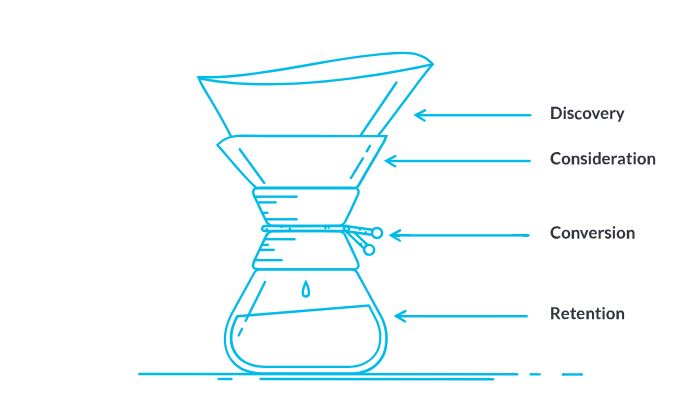4 Must-Haves for an Effective Ethics and Compliance Campaign
The average employee working in an office receives 126 emails per day. If we had to rank all of the emails in people’s inboxes from “most” to “least” exciting, it’s a safe bet that an email from the compliance department with a reminder to complete mandatory ethics and compliance training (E&C) they need to complete is pretty close to ‘least’ exciting.
In our research, we’ve found that some employees harbor a particularly negative impression of E&C learning. Many struggle to see how it contributes to making their day-to-day jobs any easier, safer, or better, and some simply view it as a waste of time. There may once have been some truth in this, but with well-known corporate scandals making headlines, E&C learning is more important than ever in the challenge to reduce risk and protect reputations.
The value of driving ethical and compliant behavior is undisputed, so how can you find new and innovative ways to bring more attention, relevance, and excitement to E&C training?
This is where emphasizing value plays an important role in successful E&C training. When training isn’t valued by employees, it’s not perceived as adding any benefit to accomplishing their daily job responsibilities. We need to build on the idea that learning, and work are closely integrated parts of everyone’s job. Building a flow of continuous learning means embedding training into the daily workflow, where its value becomes immediately apparent.
Communicating the value of ethics and compliance
Our deep expertise in the field tells us there are two driving forces behind the perception of E&C training among the modern workforce: time and perceived value.
Although learning has become more integrated into daily work processes, concern about the skills gap continues to grow. According to LinkedIn’s 2022 Workplace Learning Report, which surveyed 1,444 Learning and Development professionals and 610 learners, skills—both upskilling and reskilling—are the most critical component of future-proofing organizations and advancing an individual’s career. Employees demand not only flexible on-the-job learning, they also expect organizations to provide them with more opportunities for personal growth and purpose.
Organizations now recognize the need to nurture and cultivate human capabilities in the workforce to match employees’ expectations of on-the-job relationship building, social responsibility, and compassionate behavior. But today’s workforce already feels overwhelmed and distracted when it comes to learning and want to “take more control over their own development.” It’s challenging for E&C learning to compete with the massive amount of information, media, and distractions that employees are exposed to.
Our long experience has found that success can be achieved when employees are able to see the value E&C training offers. So before we train, we need to convince employees of the value learning offers, and win their buy-in that these learning experiences are a valuable, and even essential, use of their time.
Promoting learning with campaigns: a flexible approach
Convincing is a process, and like any process, it takes a number of steps over time, with each step focused on achieving a particular purpose. The easiest way to think about campaigns is through the lens of advertising and marketing.
To convince you to buy its latest brand of smoothie, a beverage company might conduct a campaign using a range of different advertising channels and marketing techniques throughout four main steps: Discovery, Consideration, Conversion, and Retention.
Throughout the four-steps of that campaign, the beverage company will make you aware of its new product by leveraging traditional advertising (print, TV, radio) and digital advertising (social media, sponsored content, podcasts), help you understand why you may want to try it, make it easy for you to buy it, and ultimately, nurture that relationship so you stay a customer.

source: Moz.com
Seeing a commercial once isn’t enough to make you buy that smoothie, just as learning about something one time isn’t enough to make you remember it, let alone think about it when it matters. Like advertising and marketing, learning is ultimately about changing behavior, and changing behavior is driven through repetition.
If you can fundamentally agree with that idea, then taking a campaign-based approach can also be a very successful way to deliver an effective learning experience. When we help global organizations build E&C programs to address risks and protect their brand, we aspire to go beyond time-consuming, one-time training courses. We think like marketers trying to change someone’s behavior and break the learning experience up into four steps, too:
1. Prime (Discovery): Like any good advertisement, this stage is all about making someone aware of a new concept (a risk topic or cultural value) and helping them recognize they have a learning need.
2. Train (Consideration): At this stage, you deliver key knowledge about that new concept (in-depth training), and engage each individual so they develop the right attitudes around that concept.
3. Apply (Conversion): This is when you help each individual transfer the information they’ve discovered and considered into the desired outcome. For E&C programs, it’s all about connecting the dots to operationalize the training they’ve been given in the context of their roles and responsibilities.
4. Sustain (Retention): The last stage isn’t the end of the learning journey, it’s a continual effort to embed a desired outcome and behavior. For a beverage company, it means buying the product again. For your E&C program, it means helping someone maintain what they’ve learned and reinforce why it’s important to them.
Done well, taking a campaign-based approach to E&C learning can help employees recognize the value your program provides and make it easier for them to engage with that information. Making these experiences more flexible shows employees that you value their time, and by doing that, you might just change their perception of E&C too.
Modern E&C programs consist of a forward-thinking learning methodology and technology that simplifies the experience of engaging with content. If you liked this blog post about learning methodology, you may enjoy reading about our approach to technology.



